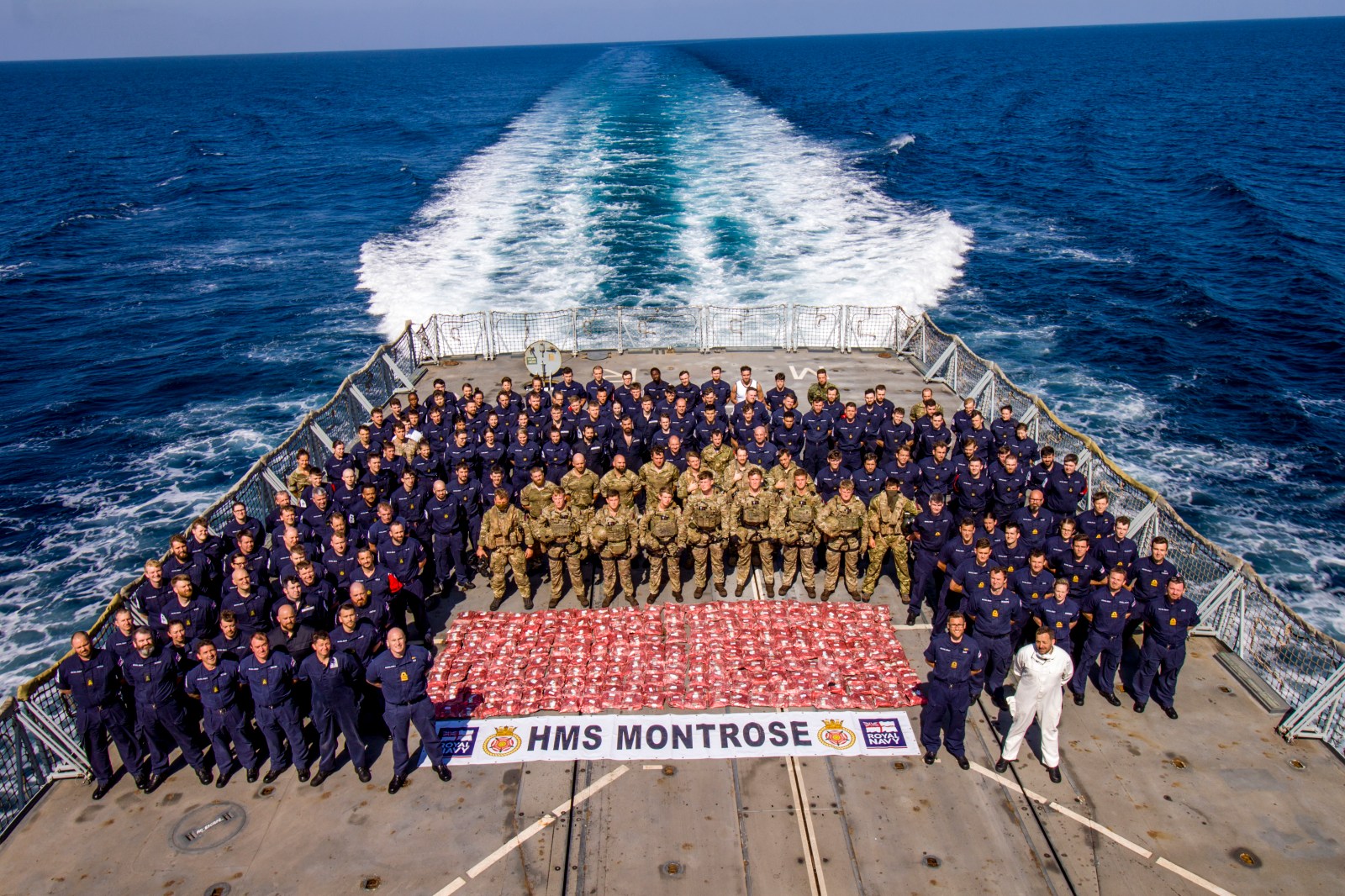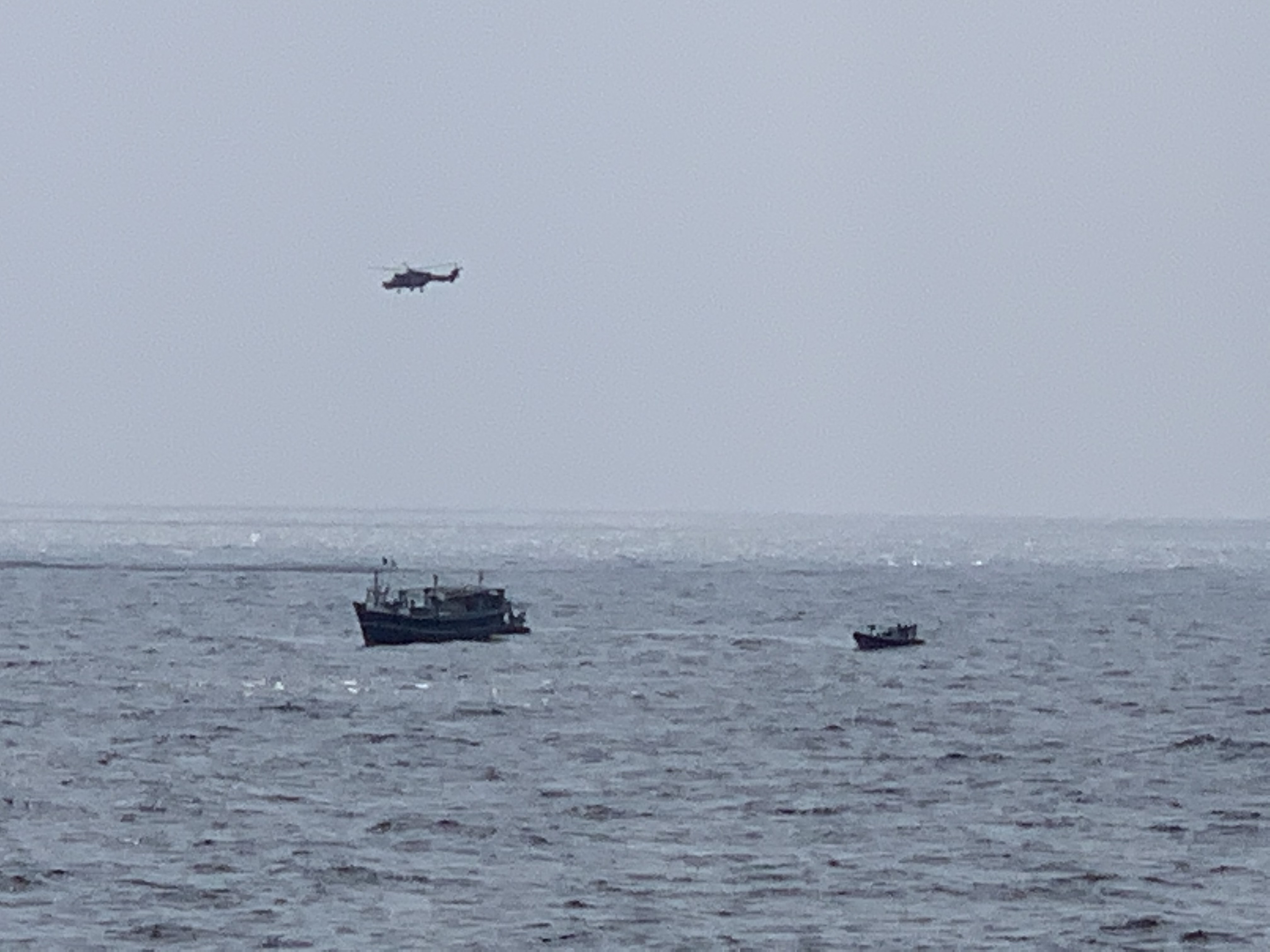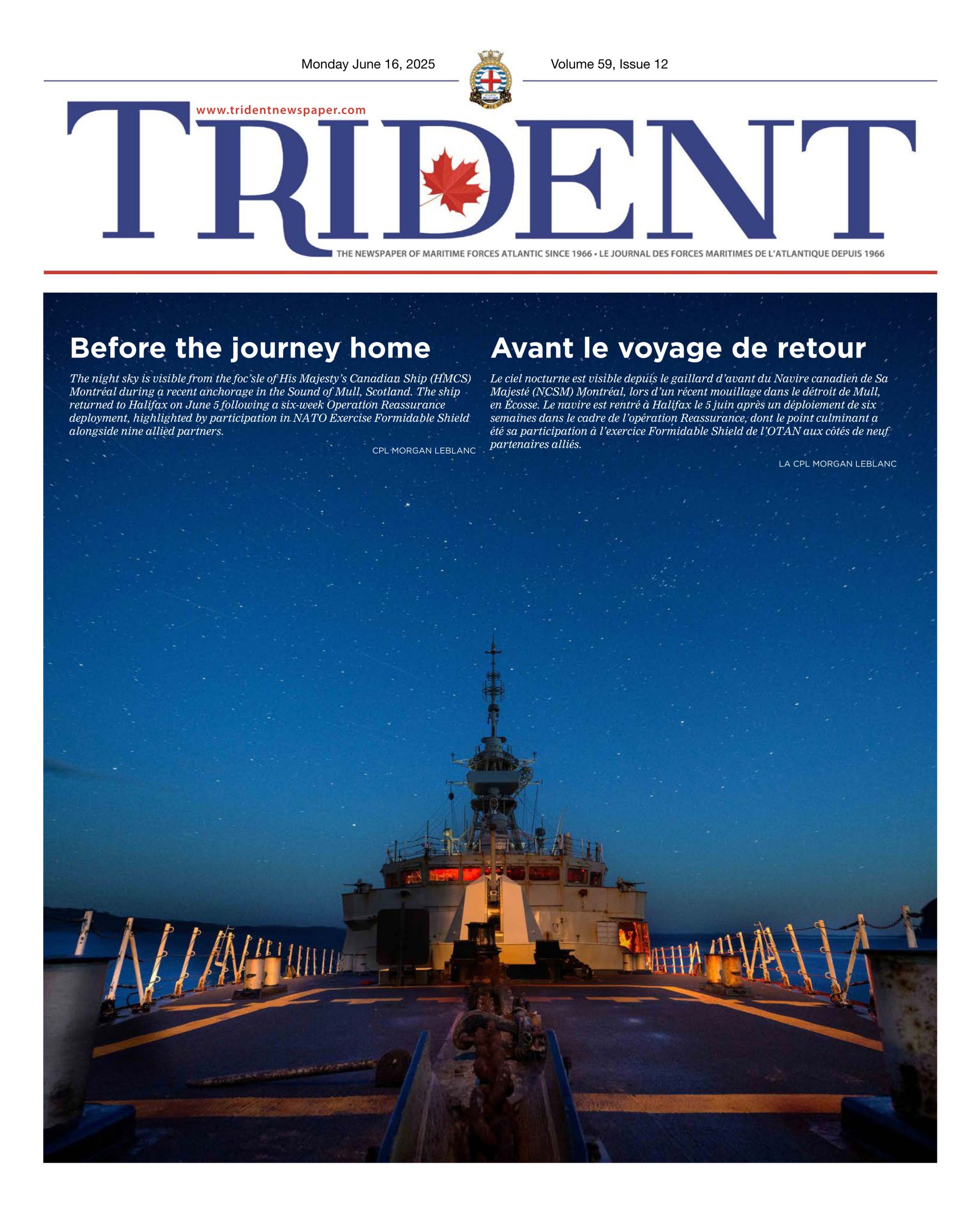
The crew of the HMS Montrose on their flight deck with their 2.7 tonne capture on February 6.
CTF 150
Combined Task Force 150: The Anatomy of a Drug Bust
By Lt(N) Melissa Kia,
CTF 150 Public Affairs Officer
The breaking sun languishes off a bleary horizon in the Northern Arabian Sea on a strip of ocean known as the “Hash Highway” as a suspicious vessel plods its way south off the coast of Oman. The dhow is being shadowed by the HMS Montrose, a Royal Navy Type 23-class Frigate, who is working under the command of Combined Task Force (CTF) 150 to halt would-be smugglers. The potential for a big bust hangs in the air amongst the crew who interdicted more than 275 kg of heroin only 36 hours previous in the same area. The hunt is on.

HMS Montrose’s helicopter providing overwatch to her ship’s boarding parties prior to boarding the dhow.
CTF 150
To the north, in Bahrain, sits the Command Center for CTF 150, where the team of Operation ARTEMIS operate. The night crew of the Battle Watch are hard at work coordinating with the Royal Navy frigate. They sport their COVID-19 protective masks, and adhere to new editions to their work routines, including social distancing and enhanced hygiene measures, to ensure they are safe as well as highly operational. The objective of the joint Canadian-Australian staff is clear: disrupt terrorist organizations from using the high seas for smuggling weapons, unlawful cargo, and drugs, all of which fund and support their illegal activities.
CTF 150 is a naval task force whose command was recently assumed by Commodore Daniel Charlebois of the Royal Canadian Navy. Its mission is to conduct Maritime Security Operations in a large area of operations which include the Arabian Sea, Gulf of Aden, Indian Ocean and the Red Sea. This task force operates under Combined Maritime Forces (CMF), a voluntary, non-political organization and multinational coalition of 33 nations whose focus is on the security, stability and the prosperity of this region. The HMS Montrose, as well as other coalition assets, have agreed to work under CTF 150’s command to detect, deter and possibly interdict smuggling activities. After only a week under Canadian leadership, CTF 150 has already interdicted over 500 kilograms of narcotics, motivating them to strive for more.
In the CTF 150 Watch Centre, Lieutenant-Commander Trevor Robinson (RCN), the Task Force Current Operations Officer, gets an important call pertaining to the shadowed vessel en route to East Africa. This trips a series of events which puts two boarding parties into motion onboard the Montrose. They prepare to get the order to move.
Such orders are not issued lightly by Cmdre Charlebois and because of this, Major Angela Orme, a Canadian Army Legal Officer, meticulously pours over a checklist to confirm that any boarding decision is in conformity with the law. Meanwhile, LCdr Robinson orchestrates the busy watch floor, ensuring timely and accurate information travels back and forth between the ship and his team. Once armed with all the required information, and legal checks, Cmdre Charlebois makes his decision for Montrose to conduct the boarding. After receiving an obligatory briefing on their Rules of Engagement (ROEs), the parties begin gearing up and making their tactical preparations. They also don masks and additional protective equipment to allow them to operate safely in a COVID-19 environment at sea. Once their commander is satisfied that his team are properly briefed and prepared, the boarding parties are lowered in their Rigid-Hulled Inflatable Boats to the sea. They slip from the side of their warship, slicing through the Northern Arabian waters towards the dhow.
Under the watchful eye of the ship’s helicopter, the boarding teams cautiously approach the dhow. Having reached their objective, they quickly ascend the wooden gunnels under the strain of their weapons and protective equipment. Before proceeding with any search and seizure, and to ensure that they operate strictly in accordance with United Nations Conventions, they radio back to the Commanding Officer of Montrose and wait for further permissions.
Back in Bahrain, the Montrose’s request for search concurrence flickers over the screens of the CTF 150 Battle Watch. Having assessed the information, the operators pass on their recommendation through their chain, seeking legal consensus from the Commander of CMF. Having met all of the necessary checks according to United Nations Convention for the Law of the Sea (UNCLOS), his response comes back to the Watch Floor: “Proceed.”
Hours pass on the old dhow as the boarding parties seize bag after bag of suspected illicit cargo. Their find is so excessive that they cannot fit all of it onto the upper decks at once. In an operation lasting just over 10 hours, more than 2.7 tonnes of heroin, crystal methamphetamine and hashish are stopped on their way to the streets; the proceeds of both this and the previous Montrose interdictions total an estimated US wholesale value of $15 M. These profits would most likely have filled the coffers of a regional terrorist or criminal organization.
Following the successful interdiction and the destruction of the narcotics at sea, the team on the CTF 150 Watch Floor and the crew onboard Montrose go back to monitoring their area of operations for additional suspect activity. Theirs is an ongoing mission of denying terrorists the ability to fund their activities from the profits of smuggling. The hunt starts once again.





